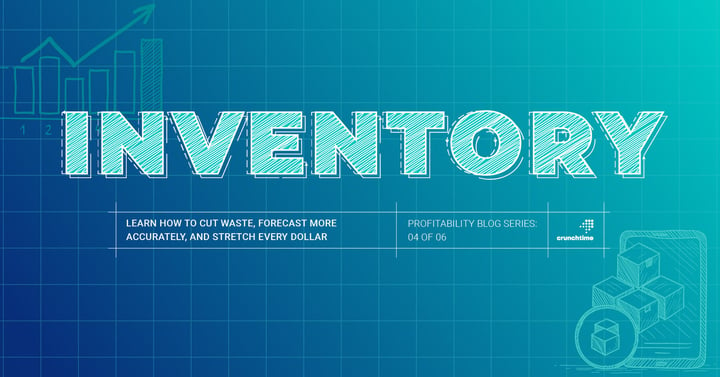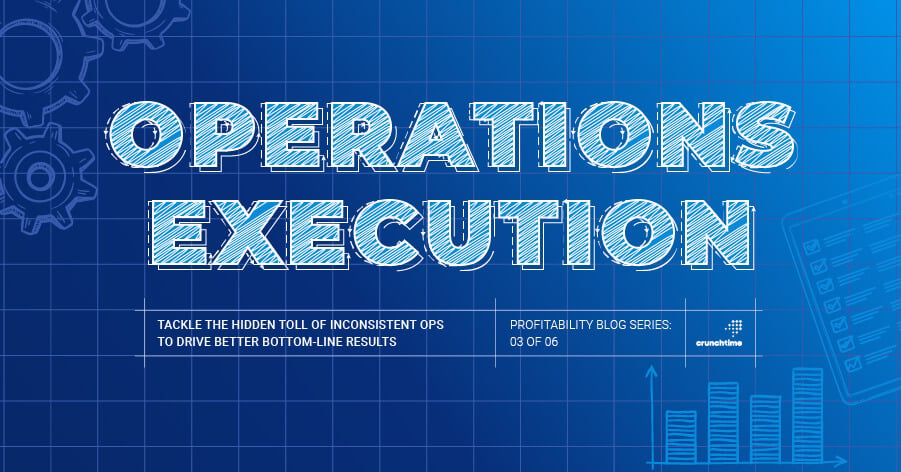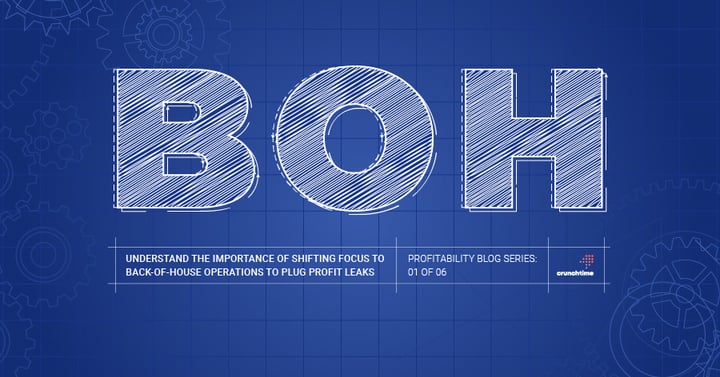
- Home
- Crunchtime Blog
- Part 3: A Profit-First Approach to Resilient Restaurant Operations

Part 3: A Profit-First Approach to Resilient Restaurant Operations
Welcome to the third installment in our series focused on driving profitability and operational resilience. In our previous posts, we explored how labor management and back-of-house (BOH) optimization play crucial roles in controlling costs and improving efficiency. Now, let’s dive into another key area that can significantly impact your bottom line: operations execution.
Every small operational misstep—from missed tasks to inconsistent service—adds up, and the cost of these inefficiencies can be devastating. Whether it's missing a food safety check, inconsistent prep across shifts, or a lack of cleanliness in the kitchen, these lapses directly affect profitability. These issues can lead to everything from increased waste and rework to customer dissatisfaction and even regulatory fines.
Without clear task management and accountability, these operational blind spots grow. They compound over time, impacting service quality, employee morale, and your bottom line. When tasks go undone or standards slip, the effect is like a slow leak in your profitability. The result? Higher costs and lower customer satisfaction.
Why FOH Tech Alone Can’t Fix Poor Execution
It's easy to assume that front-of-house (FOH) systems like POS solutions can fix execution problems. After all, these systems capture all your transactions and sales data. But while FOH solutions are crucial for tracking sales trends and customer orders, they can’t manage the processes that lead to operational success behind the scenes.
FOH systems, like a POS, don’t ensure that tasks are completed accurately or consistently across locations. They can’t track things like food safety checks, prep consistency, or cleanliness standards. And without this oversight, inconsistencies emerge—whether it’s a dish that’s prepared incorrectly or a service standard that’s not met. In short, FOH alone isn’t enough to guarantee operational excellence.
The Link Between Strong Execution and Profitability
So, what’s the connection between strong execution and profitability?
Operators estimated that if stores could more consistently complete daily operational tasks (such as cleaning/sanitization checklists, food safety logs, brand standards work, etc.), sales could potentially increase by an average of 22% in each store. It's clear that getting operations execution right can have a meaningful impact on revenue.
Simply put, consistent operations lead to improved efficiency and reduced costs. Standardizing your procedures and ensuring task completion across all locations can reduce food waste, eliminate labor inefficiencies, and enhance the overall customer experience. Here’s how:
- Faster Service: Consistent execution means quicker prep and service times, allowing you to serve more customers and increase sales volume.
- Higher Order Accuracy: When every team member follows the same standardized procedures, orders are prepared correctly the first time, reducing errors and waste.
- Reduced Complaints: Consistency leads to better quality and more predictable outcomes, increasing customer satisfaction and repeat visits.
- Prevention of Costly Incidents: Effective task management can help avoid situations like foodborne illness outbreaks or safety violations, which can have devastating financial and reputational consequences.
Four Key Action Steps to Prioritize
Here’s the deal: When operational tasks are incomplete or inconsistent, your bottom line drains steadily—no matter how many sales you make. To stop this, it’s crucial to close those operational gaps.
Here are a few key steps you can take to ensure better task execution:
- Implement Digital Checklists and Task Management Systems: Use technology to streamline task tracking and ensure accountability. Digital checklists can guide employees through daily tasks and ensure nothing is missed.
- Standardize Procedures Across All Locations: Make sure that every location follows the same set of procedures. This ensures consistency and reduces the chances of mistakes or deviations from your operational standards.
- Real-Time Oversight: With digital tools, you can get real-time visibility into the status of your operations. This enables you to identify and fix issues before they escalate.
- Track Operational Performance Metrics: By regularly monitoring key operational metrics—like task completion rates, customer feedback, and food waste—you can identify recurring problems and address them proactively.
Remember, poor operational execution is a silent profit drain that often goes unnoticed until it's too late. By improving task management and standardizing procedures across locations, you can plug the leak and watch your profitability grow.
Stay tuned for the next blog in our series, where we’ll dive into the importance of effective inventory and food cost management. In the meantime, download The Modern Operations Execution Handbook to learn more about how task management systems can improve your operations.
Share this post
Related


Part 5: A Profit-First Approach to Resilient Restaurant Operations



